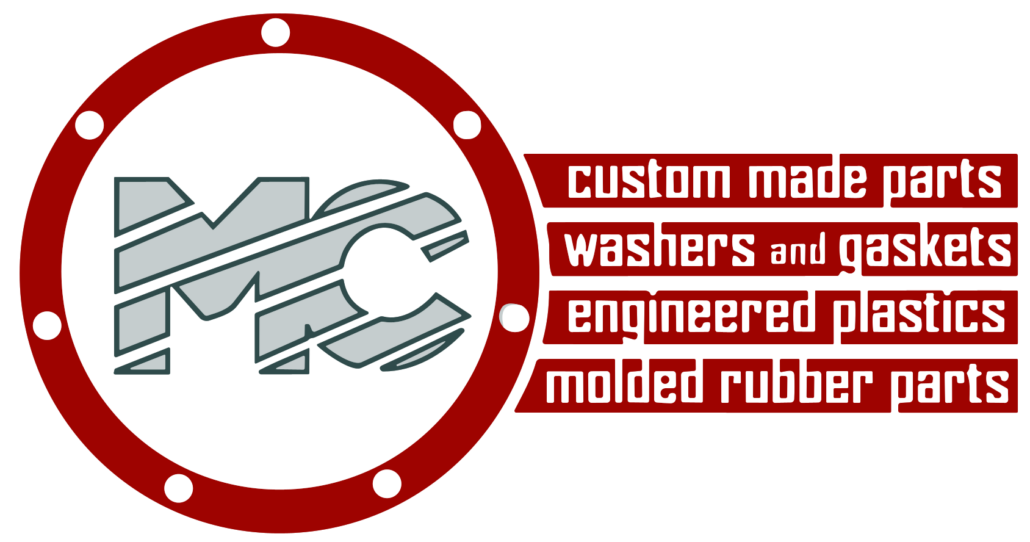As industrial professionals, we know how important it is to choose the right components for any project. One component that can make or break a project is the gasket. Gaskets are essential components that are used to seal the gap between two surfaces, preventing any fluid or gas from leaking out. Choosing the right gasket is crucial to ensure the long-lasting durability and effectiveness of any industrial project. In this blog, I will discuss the different types of gaskets available and their properties, applications, factors to consider while choosing the right gasket, and the importance of customized gaskets.
Introduction to Gaskets and Their Importance
Gaskets are essential components used in various industries, including automotive, aerospace, manufacturing, and more. They are designed to prevent gas or fluid leakage between two surfaces, ensuring that the components work efficiently and safely. The importance of gaskets cannot be overstated, as any leakage can result in significant damage, expensive repairs, or even accidents.
Gaskets come in a variety of materials, sizes, and shapes. Choosing the right gasket for your application depends on several factors, including temperature, pressure, fluid type, and surface finish. Using the wrong gasket can lead to leaks, downtime, and increased maintenance costs. Therefore, it is crucial to understand the different types of gaskets available and their properties and applications.
Different Types of Gaskets Available
There are several types of gaskets available in the market, each with its properties, applications, and limitations. Some of the most common types of gaskets are:
Rubber Gaskets – Properties and Applications
Rubber gaskets are widely used in various industries, including automotive, aerospace, and manufacturing. They are designed to withstand high temperatures and pressures and are resistant to water, oil, and most chemicals. Rubber gaskets are available in different types, including natural rubber, nitrile rubber, neoprene rubber, and EPDM rubber.
Natural rubber gaskets are suitable for low-pressure applications, while neoprene rubber gaskets are ideal for applications that require resistance to weathering, ozone, and oil. Nitrile rubber gaskets are commonly used in automotive applications, while EPDM rubber gaskets are used in the food and beverage industry.
Silicone Gaskets – Properties and Applications
Silicone gaskets are ideal for high-temperature applications and are resistant to heat, water, and chemicals. They are commonly used in the automotive industry, electrical appliances, and medical devices. Silicone gaskets offer excellent flexibility and can withstand extreme temperatures ranging from -60°C to 200°C. They are also durable and resistant to aging.
EPDM Gaskets – Properties and Applications
EPDM gaskets are ideal for outdoor applications and are resistant to weathering, ozone, and UV radiation. They are commonly used in the automotive industry, construction, and roofing. EPDM gaskets offer excellent flexibility and can withstand high temperatures and pressures.
Viton and FKM Gaskets – Properties and Applications
Viton and FKM gaskets are ideal for high-temperature and chemical-resistant applications. They are commonly used in the chemical and oil industries. Viton and FKM gaskets offer excellent resistance to chemicals, including acids, alkaline, and solvents. They are also resistant to high temperatures and pressures and have excellent durability.
Neoprene and NBR Gaskets – Properties and Applications
Neoprene and NBR gaskets are ideal for applications that require resistance to oil, fuel, and chemicals. They are commonly used in the automotive industry, marine, and construction. Neoprene and NBR gaskets offer excellent flexibility and can withstand high temperatures and pressures.
FDA Approved Gaskets – Properties and Applications
FDA approved gaskets are designed for applications that require compliance with FDA regulations. These gaskets are commonly used in the food and beverage industry, pharmaceuticals, and medical devices. FDA approved gaskets are made of materials that are safe for food contact and are resistant to high temperatures, chemicals, and water.
Factors to Consider While Choosing the Right Gasket
Choosing the right gasket depends on several factors, including temperature, pressure, fluid type, surface finish, and application. Here are some factors to consider while choosing the right gasket:
Temperature
The temperature range for the gasket material should be considered to ensure that it can withstand the temperature of the application.
Pressure
The pressure range for the gasket material should be considered to ensure that it can withstand the pressure of the application.
Fluid Type
The fluid type should be considered to ensure that the gasket material is compatible with the fluid in the application.
Surface Finish
The surface finish of the mating flanges should be considered to ensure that the gasket material can seal the gap effectively.
Application
The application should be considered to ensure that the gasket material is suitable for the specific application and environment.
Importance of Customized Gaskets
Customized gaskets are essential for applications that require non-standard sizes, shapes, or materials. Customized gaskets can be designed to meet specific application requirements, ensuring that they provide the necessary sealing properties. Customized gaskets can also reduce downtime, increase efficiency, and minimize maintenance costs by ensuring that the gasket fits perfectly and provides effective sealing.
Conclusion
In conclusion, choosing the right gasket is crucial to ensure the long-lasting durability and effectiveness of any industrial project. There are several types of gaskets available, and each has its properties, applications, and limitations. It is essential to consider various factors while choosing the right gasket, including temperature, pressure, fluid type, surface finish, and application. Customized gaskets are also essential for applications that require non-standard sizes, shapes, or materials. By choosing the right gasket, you can ensure that your industrial project runs smoothly, efficiently, and safely.
Need help choosing the right gasket for your next industrial project? Contact us today to discuss your requirements and get expert advice.
If you would like to learn more about our production, we invite you to follow the link: Manufactures Cusell
For specialized services in plastic injection molding, visit our new website (spanish only): https://www.plasticosinyeccion.com/es/



